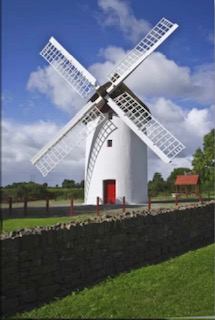
Cu mult timp în urmă, în Spania, trăia un bărbat pe nume Don Quijote. Nu era ca ceilalți oameni. A citit prea multe cărți despre cavaleri și aventurile lor. A devenit atât de obsedat de aceste povești, încât a ajuns să se creadă un cavaler în căutare de aventuri.
Don Quijote a găsit o armură veche și o sabie ruginită. Și-a luat numele de Don Quijote și și-a numit calul Rocinante. Numele lui adevărat era Alonso Quijano.
Don Quijote credea că trebuie să-i protejeze pe cei slabi și să lupte pentru dreptate, la fel ca și cavalerii din povești. Dar a fost o problemă – mintea i-a jucat feste. El a văzut morile de vânt ca niște uriași și hanurile ca pe niște castele.
A cunoscut o fată simplă pe care a numit-o Dulcinea, iar în imaginația lui, era cea mai frumoasă doamnă din lume, dar care în realitate nu era nici nobilă, nici frumoasă. El a jurat că va face fapte curajoase pentru ea. Dar Dulcinea nici nu știa de asta.
Aventurile lui Don Quijote erau uneori amuzante, alteori triste. A luptat împotriva morilor de vânt, crezând că erau dușmanii lui. A eliberat prizonieri, i-a ajutat pe cei săraci și a ajuns în multe situații nebunești.
Adesea oamenii pe care i-a întâlnit au râs de el, inclusiv de prietenul său loial Sancho Panza, un om amuzant și simplu care a devenit scutierul lui Don Quijote.
Pe măsură ce aventurile lui Don Quijote continuau, el a început să realizeze că visurile lui nu erau reale. A fost rănit de asta, dar tot credea în a face bine și a fi curajos.
În cele din urmă, familia lui Don Quijote l-a găsit și l-a adus înapoi acasă. Era foarte bolnav și slab. Don Quijote știa că sfârșitul lui era aproape, dar era fericit. Și-a dat seama că imaginația i-a dat un scop și l-a făcut să se simtă viu.
Don Quijote a murit lăsând ca moștenire bunătate, curaj și puterea imaginației. Povestea lui, scrisă de Miguel de Cervantes, a devenit una dintre cele mai cunoscute cărți din lume. Ne învață despre puterea visurilor și despre importanța de a vedea lumea cu o inimă bună.
In English:
A long time ago, in Spain, there lived a man named Don Quixote. He was not like other people. He read too many books about knights and their adventures. He became so obsessed with these stories that he came to think of himself as a knight in search of adventure.
Don Quixote found an old suit of armor and a rusty sword. He took the name of Don Quixote and named his horse Rocinante. His real name was Alonso Quijano.
Don Quixote believed that he must protect the weak and fight for justice, just like the knights in the stories. But there was a problem – his mind was playing tricks on him. He saw the windmills as giants and the inns as castles.
He met a simple girl whom he called Dulcinea, and in his imagination, she was the most beautiful lady in the world, but who in reality was neither noble nor beautiful. He vowed to do brave deeds for her. But Dulcinea didn’t even know about it.
The adventures of Don Quixote were sometimes funny, sometimes sad. He fought the windmills, believing them to be his enemies. He freed prisoners, helped the poor and got into many crazy situations.
Often the people he met laughed at him, including his loyal friend Sancho Panza, a funny and simple man who became Don Quixote’s squire.
As Don Quixote’s adventures continued, he began to realize that his dreams were not real. He was hurt by it, but he still believed in doing good and being brave.
Finally, Don Quixote’s family found him and brought him back home. He was very sick and weak. Don Quixote knew his end was near, but he was happy. He realized that imagination gave him purpose and made him feel alive.
Don Quixote died leaving a legacy of kindness, courage and the power of imagination. His story, written by Miguel de Cervantes, became one of the most famous books in the world. It teaches us about the power of dreams and the importance of seeing the world with a kind heart.
